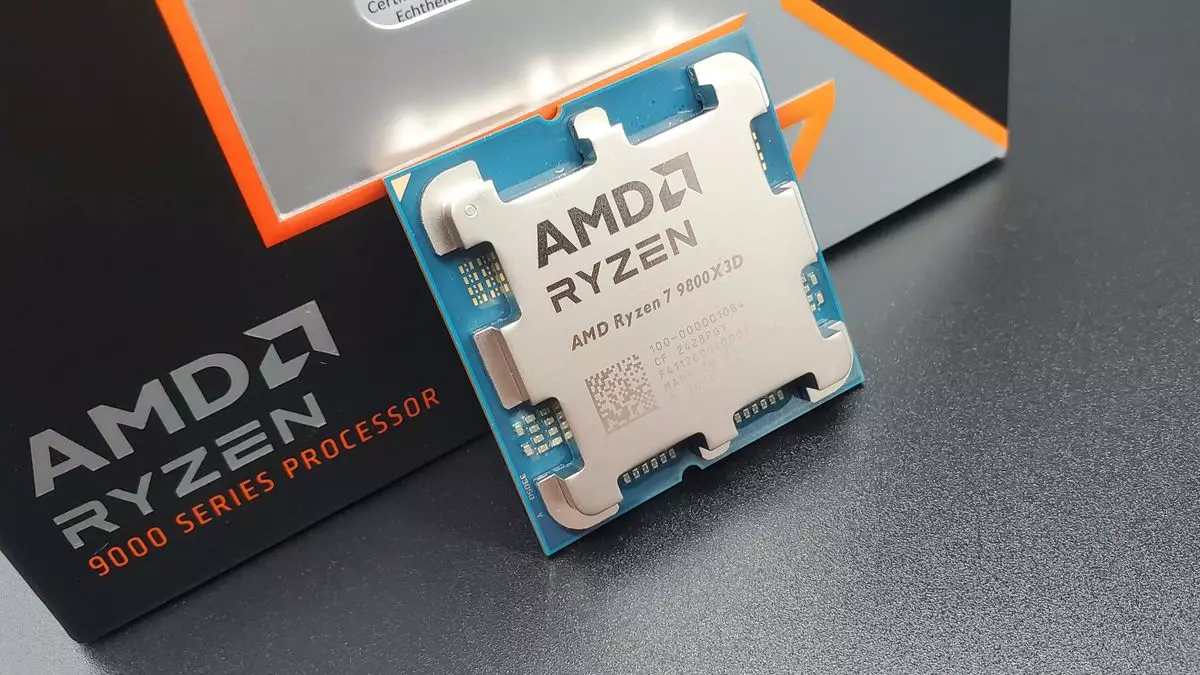The technological landscape in the CPU market has been rapidly evolving, with both AMD and Intel frequently making headlines with their new product lineups. The previous months, however, have predominantly showcased AMD’s advancements, especially with the launch of their 9000-series ‘Zen 5’ processors. At the same time, Intel’s Core Ultra 200S line-up has garnered mixed responses, indicating a shift in the competitive dynamics between the two companies.
AMD’s recent success in the processor market is noteworthy. During a Q4 2024 earnings call, AMD CEO Dr. Lisa Su emphasized that the 9000-series launch has been one of the company’s most fruitful periods in years. The high demand for AMD’s Ryzen 7 9800X3D CPUs is telling, especially given how difficult they have been to obtain at reasonable prices since their inception. This scarcity, however, raises questions about supply chain management and production capabilities. Was the sell-out merely indicative of unmatched consumer demand, or did it stem from inadequate supply to meet that demand?
Conversely, the situation mirrors another recent event in the graphics card space: Nvidia’s supposed “paper launch” with its RTX 5080 and RTX 5090 models, which came with little actual stock. AMD’s 9000 series, with its genuine sell-out experience, stands in stark contrast, suggesting a well-timed product release rather than an oversell without sufficient inventory. Dr. Su’s assertion that the company’s new products are gaining strong traction highlights the success AMD has attained, particularly given the struggles surrounding various gaming CPU lines in the market.
In the realm of CPUs, Intel has been on less stable ground. The recent introductions from the tech giant, particularly the Core Ultra 200S ‘Arrow Lake’ lineup, have not made a significant impact or surpassed competitive expectations. Many analysts and enthusiasts express concerns that Intel’s innovations have faltered in the face of AMD’s offerings. Previous generations, particularly the 13th and 14th, were marred by instability issues, which could deter potential adopters.
The pattern of Intel’s underwhelming performance in the CPU market suggests a misalignment with consumer needs, especially regarding gaming. With AMD stepping in and providing a clear alternative with their performance-leading 9000-series, the advantages Intel held have diminished over time. This dynamic becomes particularly pronounced when we consider that the market factors seem to favor AMD, at least for now.
While CPUs are a focal point, it’s pertinent to recognize the implications on the GPU front. AMD’s graphics division has struggled in comparison, as noted in Dr. Su’s earnings call. The anticipation surrounding the RX 9070 and RX 9070 XT has created a challenge for AMD as it reaches the twilight of a generation in desktop and console GPUs. Examining AMD’s overall strategy, there appears to be a shortfall in combining their CPU success with robust GPU performance. The results of upcoming launches may dictate future market standings and revenue streams.
Intel seems to face similar challenges with its GPU offerings. However, both companies are gradually shifting towards mobile innovations. AMD’s AI 300 ‘Strix Point’ mobile processors have drawn attention, being integrated into laptops and handhelds. Competitively, Intel has introduced the Core Ultra 200V ‘Lunar Lake’ mobile processor, emphasizing efficiency. However, speculation suggests that Intel’s options may lack the powerful graphical capabilities that AMD’s Strix Point chips possess.
As these trends unfold, mobile computing represents a significant battleground that’s only beginning to take shape. AMD’s notable strides have positioned the company favorably, while Intel’s effective adaptability will be crucial in retaining market relevance.
In closing, AMD appears to be riding a wave of momentum with its latest processor offerings, especially bolstered by the strong performance of the Ryzen 7 9800X3D. Conversely, Intel faces considerable challenges amid fluctuating consumer expectations and its own internal issues. While AMD seems better poised for immediate growth, the race is far from settled.
The onus will be on both companies not only to innovate but to adequately supply the market to meet rising consumer demands. For AMD, the challenge lies in addressing the supply constraints to ensure that their products can reach eager consumers. Meanwhile, Intel will need to reassess its strategies within the competitive landscape, particularly as new technology developments emerge. The CPU market remains dynamic, and how each player responds moving forward will greatly influence the industry’s direction.

